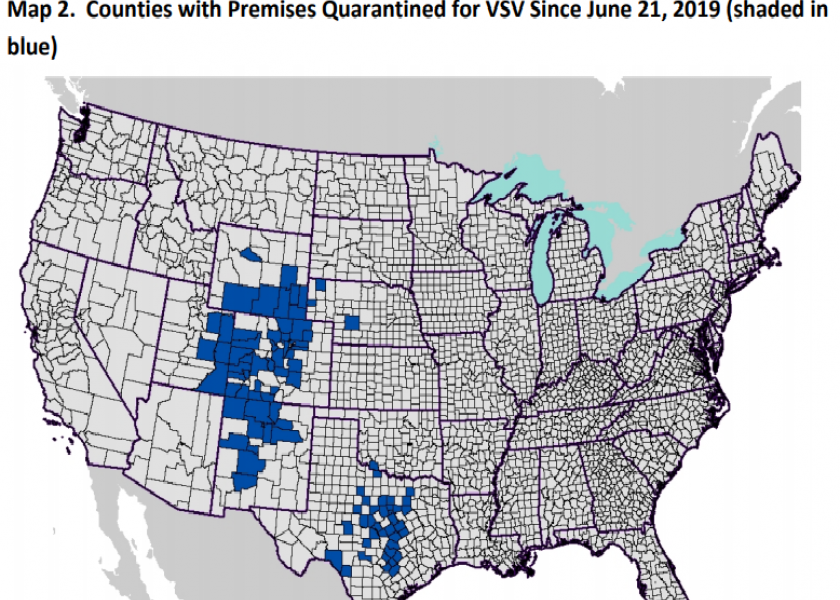VSV Outbreak Slows

This summer’s outbreak of vesicular stomatitis virus (VSV) appears to be losing steam, with no new states reporting positive cases in the USDA’s latest weekly situation report. The 2019 outbreak has been confined to seven Western states; Colorado, Nebraska, New Mexico, Oklahoma, Texas, Utah, and Wyoming, with nearly all confirmed cases affecting equines rather than cattle.
The August 29 situation report shows 54 new VSV-affected premises (32 confirmed positive, 22 suspect) identified since the previous report on August 23. These states confirmed new affected premises in the latest report:
Colorado – 14 new confirmed positive, 15 new suspect premises. Since the last situation report, 60 previously VSV-infected or suspect premises have been released from quarantine.
Nebraska – three new confirmed positive premises. One previously VSV-infected premises was released from quarantine in Scotts Bluff County.
New Mexico – two new suspect premises. Ten previously VSV-infected or suspect premises were released from quarantine.
Texas – five new confirmed positive, 2 new suspect premises. Since the last situation report, 8 previously VSV-infected or suspect premises have been released from quarantine.
Utah – Seven new confirmed positive, three new suspect premises. Since the last situation report, three previously VSV-infected or suspect premises have been released from quarantine.
Wyoming – three new confirmed positive premises. Since the last situation report, one suspect premises was released from quarantine in Platte County.
The 2019 VSV outbreak began on June 21, 2019, when the National Veterinary Services Laboratories (NVSL) in Ames, Iowa confirmed the first VSV-positive premises in Kinney County, Texas. New Mexico, Colorado, Wyoming, Oklahoma, Nebraska and Utah subsequently broke with cases which were confirmed by NVSL. Since the start of the outbreak, 905 VSV-affected premises have been identified (385 confirmed positive, 520 suspect). Nine hundred two (902) of these premises have only equine species clinically affected and three premises, in Boulder and Delta County, Colorado and Gonzales County, Texas have affected cattle.
For more on VSV and other emerging cattle diseases, see these articles from BovineVetOnline:
Summer Brings Risk of Vesicular Stomatitis
IIAD tests system for response disease outbreak
One-health Approach Helps Address Zoonotic Disease







